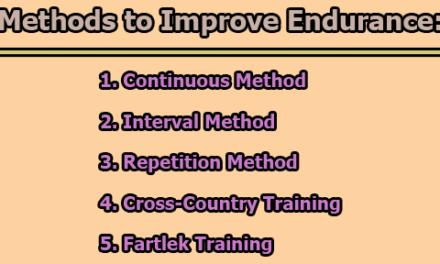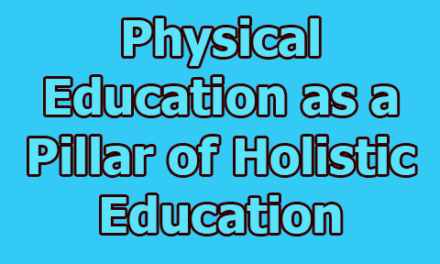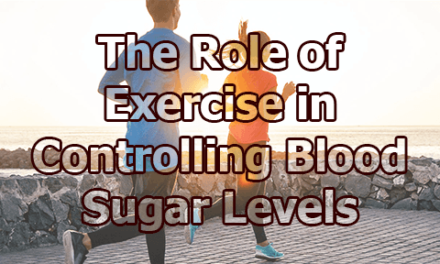Health Implications of Physical Education:
Physical Education (PE) is more than just a class where students play sports and engage in physical activities. It is a vital component of the educational system with profound health implications. PE programs are designed not only to promote physical fitness but also to instill lifelong healthy habits, contribute to mental well-being, and prevent chronic diseases. This article delves into the various health implications of Physical Education.
1. Physical Fitness and Health: Physical fitness is the cornerstone of Physical Education. PE classes provide structured opportunities for students to engage in physical activities that target cardiovascular endurance, muscular strength, flexibility, and coordination. These components of physical fitness are essential for overall health (American Heart Association, 2019).
a) Cardiovascular Health: Regular participation in aerobic exercises during PE classes improves cardiovascular health. It strengthens the heart, lowers blood pressure, and reduces the risk of heart disease. Cardiovascular fitness gained in PE contributes to lifelong heart health (American Heart Association, 2019).
b) Muscular Strength and Endurance: PE programs often include strength training exercises that help students build muscle strength and endurance. Strong muscles support better posture, reduce the risk of injuries, and enhance overall physical performance (Centers for Disease Control and Prevention, 2017).
c) Flexibility and Coordination: PE also focuses on flexibility and coordination, which are crucial for maintaining a full range of motion and preventing injuries. Improved coordination enhances physical skills and balance, reducing the risk of accidents (American Heart Association, 2019).
2. Mental Health and Well-being: Physical Education goes beyond physical health; it significantly impacts mental health and emotional well-being. Engaging in regular physical activities has been linked to numerous mental health benefits.
a) Stress Reduction: Physical activity stimulates the release of endorphins, which are natural mood lifters. It also reduces the production of stress hormones, leading to a sense of well-being. PE classes provide a structured environment for stress management (WHO, 2021).
b) Anxiety and Depression Reduction: Research has shown that physical activity can reduce symptoms of anxiety and depression. PE classes offer students opportunities to engage in activities that alleviate these mental health challenges (McDonald & Hodgdon, 2019).
c) Improved Cognitive Function: Physical activity has been linked to improved cognitive function, including better memory, attention, and problem-solving skills. These cognitive benefits extend to academic performance and overall mental agility (Tomporowski et al., 2008).
3. Social Skills and Teamwork: Physical Education places a strong emphasis on social skills and teamwork, particularly through activities such as team sports. Participation in team sports requires students to collaborate, communicate, and form relationships with their peers.
a) Cooperation: Team-based activities in PE foster cooperation and teamwork. Students learn to work together towards common goals, respect each other’s contributions, and appreciate the value of collective effort (NASPE, 2020).
b) Leadership Development: Through team sports, students have opportunities to take on leadership roles. They learn to lead by example, make decisions under pressure, and motivate their teammates (NAPES, 2020).
c) Conflict Resolution: Team sports also teach conflict resolution skills. Students learn to manage conflicts, resolve disputes amicably, and maintain positive relationships with their peers (Burdette & Whitaker, 2005).
4. Personal Responsibility and Goal Setting: Personal responsibility and goal setting are integral components of Physical Education. Students are encouraged to take ownership of their health and well-being by setting fitness goals, monitoring their progress, and making necessary adjustments.
a) Discipline and Time Management: Setting and working towards fitness goals requires discipline and time management. These skills are not only applicable to physical fitness but also to academic and life goals (Locke & Latham, 2002).
b) Self-Efficacy: Achieving fitness goals in PE enhances self-efficacy, the belief in one’s ability to accomplish tasks and reach objectives. This sense of self-efficacy can positively impact various aspects of life (Locke & Latham, 2002).
5. Nutritional Awareness and Healthy Eating Habits:
a) Nutritional Education: Physical Education often incorporates nutritional education as part of the curriculum. Students learn about the importance of a balanced diet, essential nutrients, portion control, and the benefits of making healthy food choices. This knowledge helps students develop healthier eating habits, contributing to their overall well-being (CDC, 2020).
b) Prevention of Childhood Obesity: PE programs play a crucial role in combating childhood obesity. By combining physical activity with nutritional education, students are better equipped to maintain a healthy weight and reduce the risk of obesity-related health issues (American Academy of Pediatrics, 2019).
6. Injury Prevention and Safety Awareness:
a) Safety Education: PE curriculum design includes safety education to prevent injuries during physical activities. Students are taught proper techniques, equipment usage, and injury prevention strategies. These lessons not only reduce the risk of injuries during PE classes but also promote safety in all physical activities outside of school (CDC, 2017).
b) Awareness of Safe Exercise Practices: Students learn to recognize their physical limits and exercise safely. This knowledge extends beyond PE classes, helping them make informed choices about physical activities in recreational and sports settings, reducing the risk of accidents and injuries (CDC, 2017).
7. Improved Sleep Quality: Regular physical activity in PE has been linked to improved sleep patterns. Engaging in physical exercise helps students fall asleep faster, enjoy deeper sleep, and wake up feeling more refreshed. Adequate sleep is essential for overall health and well-being (National Sleep Foundation, 2021).
8. Life-long Healthy Habits:
a) Lifelong Commitment to Physical Activity: The habits and knowledge acquired in PE classes can lead to a lifelong commitment to physical activity. Graduates of well-structured PE programs are more likely to continue engaging in regular exercise and maintaining their health as adults (American Academy of Pediatrics, 2019).
b) Positive Role Models: PE instructors often serve as positive role models for students. Their enthusiasm for physical fitness and healthy lifestyles can inspire students to adopt similar habits and attitudes throughout their lives (NAPES, 2020).
9. Reduced Risk of Chronic Diseases: Regular physical activity, as promoted in PE, reduces the risk of chronic diseases such as heart disease, diabetes, and certain types of cancer. By engaging in physical activities from a young age, students lay the foundation for a healthier future (U.S. Department of Health and Human Services, 2018).
10. Improved Body Image and Self-Esteem:
a) Positive Body Image: PE classes contribute to the development of a positive body image. Students learn to appreciate their bodies for their capabilities rather than just their appearance. This positive body image can have lasting effects on self-esteem and mental well-being (Cash & Pruzinsky, 2002).
b) Increased Self-Esteem: Achieving physical fitness goals and excelling in physical activities can boost students’ self-esteem. Positive experiences in PE classes help students develop a sense of accomplishment and self-worth (Tomporowski et al., 2008).
It is apparent that Physical Education has a profound impact on various aspects of health and well-being. It not only promotes physical fitness and cardiovascular health but also contributes to mental health by reducing stress, anxiety, and depression. PE fosters social skills, teamwork, and personal responsibility, while also raising awareness of healthy eating habits and injury prevention. Additionally, it sets the stage for lifelong healthy habits, reduces the risk of chronic diseases, improves body image and self-esteem, and enhances sleep patterns. Therefore, Physical Education remains a critical component of education with far-reaching health implications that benefit students throughout their lives.
References:
- American Academy of Pediatrics. (2019). The Crucial Role of Recess in School.
- American Heart Association. (2019). American Heart Association Recommendations for Physical Activity in Adults and Kids. https://www.heart.org/en/healthy-living/fitness/fitness-basics/aha-recs-for-physical-activity-in-adults
- Burdette, H. L., & Whitaker, R. C. (2005). Resurrecting Free Play in Young Children: Looking Beyond Fitness and Fatness to Attention, Affiliation, and Affect. Archives of Pediatrics & Adolescent Medicine, 159(1), 46-50.
- Cash, T. F., & Pruzinsky, T. (2002). Body Image: A Handbook of Theory, Research, and Clinical Practice. Guilford Press.
- Centers for Disease Control and Prevention (CDC). (2017). School Health Guidelines for Physical Education and Physical Activity. https://www.cdc.gov/healthyschools/physicalactivity/guidelines.htm
- Centers for Disease Control and Prevention (CDC). (2019). Physical Education Curriculum Analysis Tool. https://www.cdc.gov/healthyschools/pecat/index.htm
- Centers for Disease Control and Prevention (CDC). (2020). Health Education Curriculum Analysis Tool (HECAT).
- Locke, E. A., & Latham, G. P. (2002). Building a Practically Useful Theory of Goal Setting and Task Motivation: A 35-Year Odyssey. American Psychologist, 57(9), 705-717.
- McDonald, N., & Hodgdon, C. (2019). The Role of Physical Activity and Physical Education in Promoting Mental Health. Youth & Society, 51(5), 629-643.
- National Sleep Foundation. (2021). Exercise and Sleep. https://www.sleepfoundation.org/exercise-and-sleep
- National Association for Sport and Physical Education (NASPE). (2020). The Value of Physical Education for Students.
- Tomporowski, P. D., Davis, C. L., Miller, P. H., & Naglieri, J. A. (2008). Exercise and Children’s Intelligence, Cognition, and Academic Achievement. Educational Psychology, 48(9), 1031-1043.
- S. Department of Health and Human Services. (2018). Physical Activity Guidelines for Americans. https://health.gov/paguidelines/second-edition/

Assistant Teacher at Zinzira Pir Mohammad Pilot School and College










